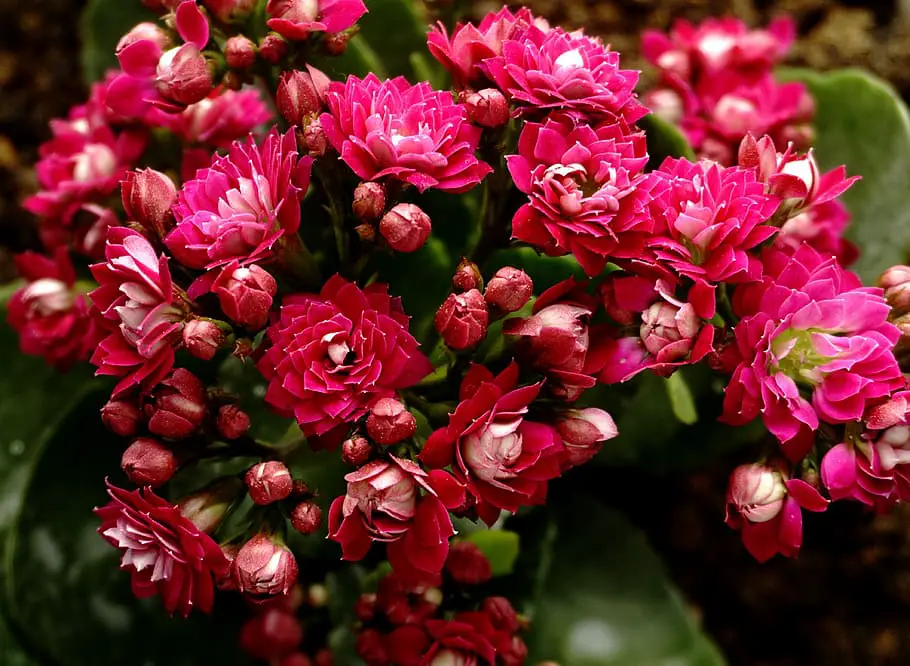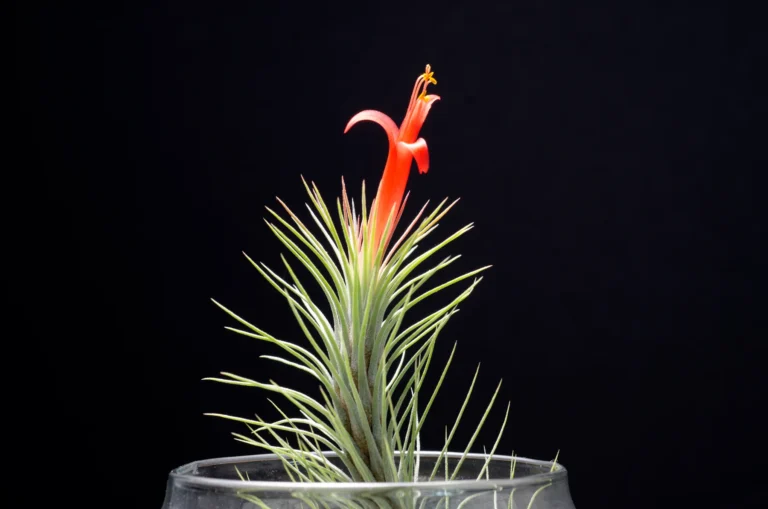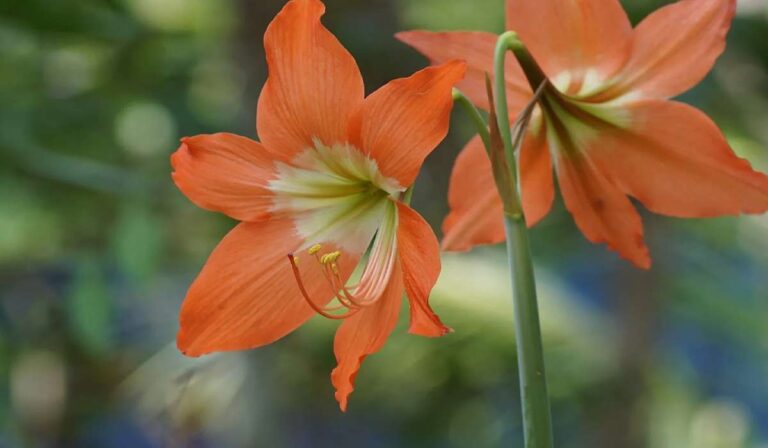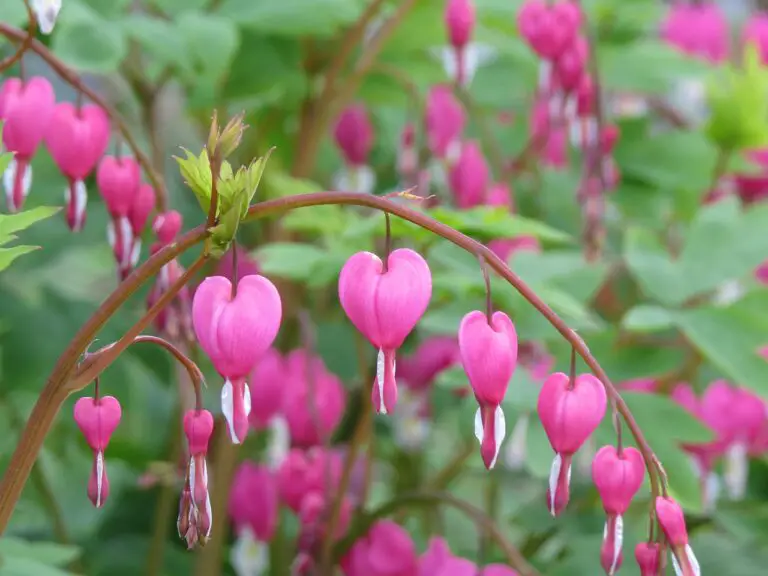I. Introduction
A. Brief Overview of the Red Kalanchoe Plant
The red kalanchoe plant, also known as Kalanchoe blossfeldiana, is a vibrant and popular houseplant that belongs to the Crassulaceae family. With its stunning red blooms and attractive succulent leaves, this plant has become a favorite among indoor gardening enthusiasts.
B. Importance of Proper Care for Healthy and Thriving Houseplants
Caring for houseplants, including the red kalanchoe, is essential to ensure their health and longevity. Proper care not only promotes vigorous growth but also encourages consistent flowering, adding a touch of natural beauty to any living space.

II. Understanding Red Kalanchoe Plants
A. Botanical Characteristics and Appearance
Red kalanchoe plants feature fleshy, oval-shaped leaves with serrated edges and a waxy texture, which helps them retain moisture. The plant’s stunning red flowers form dense clusters, creating a striking contrast against the green foliage.
B. Popular Varieties and Cultivars
Several popular varieties and cultivars of red kalanchoe are available, offering a range of flower colors and sizes. Some well-known cultivars include ‘Tessa,’ ‘Mona Lisa,’ and ‘Christmas Flame,’ each bringing its unique charm to indoor spaces.
Overview
- Scientific name: Kalanchoe blossfeldiana
- Common names: Red kalanchoe, Flaming Katy, Flaming Katy kalanchoe, Florist’s kalanchoe, Madagascar jewel
- Family: Crassulaceae
- Genus: Kalanchoe
- Origin: Madagascar
- Perennial succulent plant
- Grows to be about 12-18 inches (30-45 cm) tall
- Has thick, fleshy leaves
- Produces clusters of small, star-shaped flowers
- Flowers can be red, orange, yellow, or pink
- Blooms in the winter and spring
- Red kalanchoe is a popular houseplant
20 Fragrant Flowers Plant: Symbolism & History
III. Light and Location Requirements
A. Ideal Light Conditions for Red Kalanchoe
Red kalanchoe plants thrive in bright, indirect light. Placing them near a south or west-facing window with filtered sunlight ensures they receive the right amount of light without being exposed to harsh rays.
B. Choosing the Right Location Indoors for Optimal Growth
When selecting a spot for your red kalanchoe, consider factors such as temperature, humidity, and air circulation. Avoid placing them in drafty areas or near heat sources, as extreme conditions can stress the plant.
IV. Watering Techniques
A. Determining the Watering Needs of Red Kalanchoe
As succulents, red kalanchoe plants have water-storing abilities in their leaves. It’s crucial not to overwater them to prevent root rot and other water-related issues. Allow the soil to dry out between waterings.
B. Best Practices for Watering Frequency and Amount
To ensure proper hydration, water the plant thoroughly until water drains from the bottom of the pot. In winter, reduce watering frequency to accommodate the plant’s dormant period.
The Black Pagoda Lipstick Plant: A Beginner’s Guide
V. Soil and Fertilization
A. Suitable Soil Types and Mixtures for Red Kalanchoe
Well-draining soil is essential for the healthy growth of red kalanchoe. A mix of regular potting soil and perlite or sand can provide the perfect balance of moisture retention and drainage.
B. Using Fertilizers to Enhance Growth and Flowering
During the active growing season in spring and summer, fertilize the red kalanchoe with a balanced, water-soluble fertilizer. Avoid over-fertilization, as it can lead to nutrient imbalances and affect the plant’s health.
Pink Lily Of The Valley: The Delicate Beauty Of A Charming Flower
VI. Temperature and Humidity Considerations
A. Recommended Temperature Range for Red Kalanchoe Plants
Red kalanchoe plants prefer temperatures between 60°F to 85°F (15°C to 29°C). Protect them from extreme cold or hot conditions, as they are sensitive to temperature fluctuations.
B. Managing Humidity Levels for a Thriving Environment
Kalanchoes enjoy moderate humidity levels. You can increase humidity by placing a humidity tray filled with water and pebbles near the plant or by using a room humidifier.
VII. Pruning and Deadheading Tips
A. Importance of Pruning for Shape and Health
Regular pruning helps maintain the desired shape of the red kalanchoe and encourages new growth. Remove dead or wilted flowers and trim leggy stems to promote a more compact and bushy appearance.
B. How to Properly Deadhead to Encourage New Blooms
Deadheading involves removing spent flowers to stimulate the growth of fresh blooms. Pinch off the faded flowers just above the nearest set of healthy leaves or buds.
VIII. Dealing with Pests and Diseases
A. Common Pests Affecting Red Kalanchoe Plants
Red kalanchoes are relatively resilient, but they can still face challenges from pests like aphids, mealybugs, and spider mites. Inspect the plant regularly and address any pest issues promptly.
B. Preventive Measures and Natural Remedies for Diseases
To prevent diseases, avoid overwatering and maintain good air circulation around the plant. Neem oil and natural insecticidal soaps can be effective against certain pests.
IX. Propagation Methods
A. Step-by-Step Guide to Propagating Red Kalanchoe Through Cuttings
Propagating red kalanchoe is an exciting way to create new plants. Take stem cuttings from a healthy parent plant, let them callus for a day, then plant them in well-draining soil.
B. Exploring Other Propagation Techniques
Besides cuttings, red kalanchoe can be propagated through division or leaf cuttings, giving you multiple options to expand your collection.
X. Repotting Red Kalanchoe Plants
A. Recognizing Signs for Repotting
As the red kalanchoe grows, it may outgrow its current container. Look for roots emerging from the drainage holes or a pot that becomes top-heavy as signs that repotting is needed.
B. Best Practices for Successful Repotting
When repotting, choose a slightly larger pot with drainage holes, and use fresh, well-draining soil. Be gentle with the roots to avoid causing unnecessary stress to the plant.
XI. Special Care During Blooming Season
A. Understanding the Blooming Cycle of Red Kalanchoe
Red kalanchoe typically blooms in late fall or early winter, adding a burst of color to your indoor garden during the holiday season.
B. Tips for Enhancing and Prolonging Flowering
To prolong the blooming period, place the plant in a cool spot (around 50°F to 60°F/10°C to 15°C) and ensure it receives 12 to 14 hours of darkness daily.
XII. Red Kalanchoe Toxicity and Safety
A. Potential Risks and Precautions for Pets and Children
While red kalanchoe is beautiful, it’s essential to be aware that it contains compounds that can be toxic to pets and children if ingested. Keep the plant out of reach and contact a vet or doctor immediately if ingestion occurs.
B. Safety Guidelines for Handling Red Kalanchoe Plants
When handling red kalanchoe, wear gloves to protect your skin from potential irritation, especially if you have sensitive skin.
XIII. Troubleshooting Common Issues
A. Identifying and Addressing Common Problems
Common issues with red kalanchoe include yellowing leaves, wilting, and poor flowering. Identifying the underlying causes will help you take appropriate corrective measures.
B. Troubleshooting Guide for Optimal Plant Health
Refer to this troubleshooting guide to address problems promptly and keep your red kalanchoe thriving.
XIV. Conclusion
A. Recap of the Essential Care Secrets for Thriving Red Kalanchoe Houseplants
To enjoy the beauty of red kalanchoe throughout the year, ensure it receives the right amount of light, water, and proper care.
B. Encouragement for Plant Enthusiasts to Create a Beautiful Indoor Garden
With its stunning blooms and manageable care requirements, the red kalanchoe is an excellent addition to any indoor garden. Embrace the joy of nurturing and witnessing the beauty of this charming houseplant. Happy gardening!
History
- The red kalanchoe plant was first discovered in Madagascar in 1924 by Perrier de la Bâthie. It was introduced to Europe in 1927 by Robert Blossfeld, a German seed merchant. Blossfeld named the plant after himself, and it quickly became a popular houseplant. Status in culture:
- The red kalanchoe plant is a popular symbol of good luck and prosperity in many cultures. It is often given as a gift to celebrate special occasions, such as birthdays, weddings, and holidays.
- Flower symbolism: The flowers of the red kalanchoe plant are often considered to be a symbol of love, passion, and desire. They are also associated with good luck and prosperity.
- Uses
- The red kalanchoe plant is used in a variety of ways, including:
- Ornamental: The red kalanchoe plant is a popular houseplant, and it is often used in gardens and flower arrangements.
- Medicine: The leaves of the red kalanchoe plant have been used to treat a variety of ailments, including burns, cuts, and insect bites.
- Food: The leaves of the red kalanchoe plant can be eaten, and they have a sour, citrusy flavor.
Here are some other interesting facts about red kalanchoe:
- The red kalanchoe plant is a succulent, which means that it stores water in its leaves. This makes it a very drought-tolerant plant, and it can survive for long periods of time without water.
- The red kalanchoe plant is a relatively easy plant to care for. It needs bright, indirect sunlight and well-drained soil. It should be watered regularly, but the soil should not be allowed to become soggy.
- The red kalanchoe plant is a prolific bloomer. It can bloom for several months at a time, and it produces a large number of flowers.
- The red kalanchoe plant is a relatively inexpensive plant. It can be purchased at most garden centers and online retailers.







